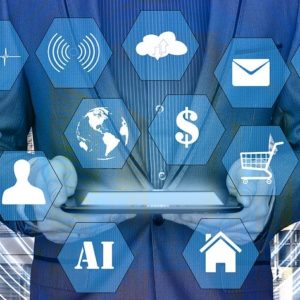The COVID-19 pandemic exposed myriad vulnerabilities inherent in our day-to-day lives.
From the interpersonal (Are we able to set aside our individual preferences for the collective good?) to the commercial (How do we conduct business from afar?), we’ve been forced to grapple with how the systems we’ve taken for granted may not be as sustainable as we once thought they were.
Chief among these systems is the technology used to keep the business of government running. COVID-19 highlighted an unfortunate truth: Government agencies’ IT infrastructure simply isn’t suited to modern times and contemporary obstacles.
According to a survey Insight Enterprises conducted of IT directors at 200 U.S. federal, state and local government agencies, even though 63 percent said their organizations were very or extremely prepared to face the challenges created by COVID-19, more than half (53 percent) said they experienced three or more weeks of downtime for some or all of their workforce.
This disruption could not have come at a worse time, with everyday citizens relying on that technology to help them navigate unemployment insurance for the first time, check in on their stimulus payments and access reliable information on their communities’ response to the pandemic.
This shouldn’t have happened. We hope it never happens again. That’s why I argue that agencies at all levels of government should undertake the following steps now to modernize and future-proof their IT systems:
— Learn to love the cloud. Cloud computing offers numerous benefits, and transitioning data from an on-premises server to the cloud can actually be one of the most important things government agencies can do from both a continuity and security perspective. Many cloud providers are better equipped to protect and secure sensitive information than in-house resources may be, and the redundancies built into a properly implemented cloud system can help prevent server outages from interrupting service. There are also, of course, the added benefits of long-term cost reductions and efficiency.
— Organize your data. Government agencies have had decades to accumulate data that can help them run faster and smarter. Unfortunately, legacy systems mean that data is likely stored across a hodge-podge of servers and nodes, and few (if any) people are able to see the full picture. In order to have a truly modern IT operation, agencies must have a comprehensive understanding of what data they have, where it’s stored and, crucially, what it means. Data is useless without insights — so not only must the public sector invest in tools and technology to help them aggregate and organize their data; they must also work to recruit and retain the best and brightest data analysts to help them make sense of it.
— Embrace automation. By automation, I don’t mean replacing humans with machines — rather, I’m referring to implementing technologies that can make government IT workers’ lives easier. From an information management perspective, automation can make it easier for government IT departments to provision and deploy new devices to workers, push out automatic security updates to multiple devices, and gather real-time data to help improve the end-user experience. Public sector IT directors already see the upside: According to Insight’s survey, before COVID-19 hit, only about one-quarter of public sector IT professionals said automation was a top 3 priority for their department. Post-COVID, however, that number grew to 35 percent.
Make no mistake, however: Taking these steps now, while government agencies are still struggling to cope with the impact of COVID-19, is tantamount to changing the tires on a moving vehicle. It will not be simple, easy or inexpensive.
But if COVID-19 has taught us anything, it’s that we can no longer afford to wait — the public depends on this technology to stay afloat amid the chaos.

